38 what vitamins and minerals are required on the new food labels
Industry Resources on the Changes to the Nutrition Facts Label 11 Jan 2022 — The sample label on page 33999 of the final rule shows the order in which commonly listed vitamins and minerals are declared on dietary ... New Nutrition Facts Label in 2020: Changes and What to Know - Healthline The old nutrition facts label listed the amounts of several important vitamins and minerals, including calcium, iron, and vitamins A and C. However, vitamins A and C are no longer required to be...
Nutrition Facts Labeling — FDA Reader Vitamins (listed in order) Vitamin A Vitamin C Vitamin D Vitamin E Vitamin K Thiamin Riboflavin Niacin Vitamin B6 Folate Vitamin B12 Biotin Pantothenic Acid Choline Macronutrients & Minerals (In order) Calcium Iron Phosphorus Iodine Magnesium Zinc Selenium Copper Manganese Chromium Molybdenum Chloride Potassium

What vitamins and minerals are required on the new food labels
How to read the new food nutrition facts label - CNET The nutrients portion of the label now shows vitamin D, calcium, potassium and iron. The old label reported amounts for vitamin A, vitamin C, calcium and iron. The changes reflect the fact that... Vitamins and Minerals for Children: Calcium, Vitamin D, and … Food Sources: Foods high in fiber include berries, broccoli, avocados, and oatmeal. Another excellent source of fiber is almost any kind of bean, such as navy, pinto, red, or kidney beans, or ... Kirkland Signature Daily Multi Vitamins & Minerals Tablets ... Kirkland Signature Daily Multivitamin and Multimineral Pack is specially formulated based on the latest research in nutritional science. This product provides a complete, full-potency formulation of vitamins, minerals and Ginseng to help deliver essential nutrients that may be missed if you are not eating a balanced diet.
What vitamins and minerals are required on the new food labels. What's New with the Nutrition Facts Label - FDA 25 Feb 2022 — Vitamin A and C are no longer required on the label since deficiencies of these vitamins are rare today. These nutrients can be included on a ... KIN Chapter Eight Flashcards | Quizlet Food labels on processed foods in the United States must indicate. the serving size for the food. Presently, pregnant and breastfeeding women are often encouraged to ... which vitamins and minerals are required on the new label format? calcium iron potassium vitamin D. If dietary supplements were regulated in the same way as FDA-approved ... Nutrition Labels 101: What's Required? What's Optional? Total carbohydrates is a required listing unless there is less than 1 gram, at which point it can be expressed as "contains less than 1 gram," or if less than 0.5 grams per serving, it can be expressed as zero. Sugars are the sneaky nutrient found naturally in many "healthy" foods, including fruit and milk. What vitamins are required on the nutrition label? The label must include fat, saturated fat, cholesterol, total carbohydrate, fiber, sugars, protein, vitamins A and C, calcium, and iron. If the corporation so desires, other nutrients may be listed. On nutrition labels, how is iron listed? Under the new nutrition label requirements, the DV for iron will remain at 18 mg.
How To Read Food and Beverage Labels - National Institute on Aging At the top of the Nutrition Facts label, you will find the total number of servings in the container and the food or beverage's serving size. The serving size on the label is based on the amount of food that people may typically eat at one time and is not a recommendation of how much to eat. Read more about serving and portion sizes. The New and Improved Nutrition Facts Label - FDA Vitamin D and potassium are now required on the label because Americans do not always get the recommended amounts. Vitamins A and C are no longer required since ... New Food Label Spotlight: Vitamins and Minerals Calcium and iron will remain on the label. Though manufacturers can continue to list vitamin A and vitamin C on their labels if they wish, vitamin D and potassium are the new heavy hitters. Amazon.com: Premier Protein Shake, Cake Batter, 30g Protein, 1g … Required to have a minimum of 60g protein for surgery and no added sugar/ very low carbs. These are PERFECT with 30g protein, 3g NET carbs, 1g fiber and you can take anywhere. Also added vitamins and minerals which are important pre and post surgery. Don’t need to be refrigerated until opened.
The New Food Label: What RDs Need to Know In addition, vitamin D and potassium are replacing vitamins A and C as nutrients of public health significance and will now be mandatory on all labels. Vitamins ... FDA issues new requirements for food labels - UPI.com FDA issues new requirements for food labels The nutritional labels consumers rely on to know how much salt, sugar, fat and other vitamins and minerals are in their food have not changed since 1993. Vitamins and Minerals: Types, Sources and their Functions 30.06.2020 · the daily-required allowance of various vitamins and minerals. Factors such as physical exercise, pregnancy , childhood, adolescence, old age or speci c diets (e.g. Go Further with Food: Get to Know the New Nutrition Facts Label Vitamins and Minerals: Potassium and Vitamin D These two aren't newcomers to the food label, but until now neither was required to be listed. We've come to understand that Americans don't get enough potassium and vitamin D and that each contributes to good health in unique ways.
How to Read the New Food Label - The Johns Hopkins Patient Guide to ... Vitamin D, calcium, iron, and potassium are the vitamins/minerals that are required on the new food label. Vitamins A and C are no longer required because the risk of deficiency is low. Higher amounts of potassium can be beneficial to help lower blood pressure. People with kidney disease may need to monitor or decrease potassium.
Understanding Food Labels | The Nutrition Source | Harvard T.H. Under the Food Allergen Labeling and Consumer Protection Act of 2004, eight major food allergens—milk, fish, tree nuts, peanuts, shellfish, wheat, eggs, and soybeans—are required to be listed in a “contains” statement near the Ingredients list if present in a food. An example would be “contains wheat, milk, and soy.”
Reading the New Food Labels | Home & Garden Information Center Your goal for these micronutrients (vitamins A and C and the minerals, calcium and iron) is to get 100% of the Daily Value every day from the foods you eat. The following micronutrients are optional on the Nutrition Facts label: Vitamin A keeps eyes and skin healthy and helps to protect against infections.
Why the Nutrition Facts Label Can Lead You Astray On a side note, Nutrition Facts labels aren't required to list any vitamins and minerals except vitamin A, vitamin C, calcium, iron, and sodium. Why not the others? Because the FDA did not consider them vital for Americans. There are many arguments on how that is not in agreement with current scientific evidence. But there's hope on the horizon.
Vitamins and minerals - Food and nutrition | NHS inform 30.04.2020 · Vitamins and minerals are essential nutrients that your body needs in small amounts to work properly. ... Foods that contain free sugars aren't required as part of a healthy balanced diet, so you should try to eat these less often and in smaller amounts. To do this, use food labels to choose items that are lower in sugar and swap:
The New Food Labels: Information Clinicians Can Use - Medscape Vitamins A and C would no longer be required on the label, although manufacturers could declare them voluntarily. Vitamin D deficiency is widely prevalent. [ 2 ]
6 Vitamins and Minerals Your Kids Need - WebMD Check food labels for the content of cyanocobalamin, the active form of vitamin B12. 4. Vitamin D. Vitamin D works with calcium to build strong bones. It may also help protect against chronic ...
Vitamins and minerals - Food and nutrition | NHS inform Apr 30, 2020 · More about vitamins. Minerals. Minerals include calcium and iron amongst many others and are found in: meat; cereals; fish; milk and dairy foods; fruit and vegetables; nuts; Minerals are necessary for 3 main reasons: building strong bones and teeth; controlling body fluids inside and outside cells; turning the food you eat into energy; Trace ...
FDA Rounding Rules for Your Food Label - LabelCalc A statement that says something to the effect of "not a significant source of X nutrient" if all four required vitamins and minerals are less than 2%. 2% if the value is greater than 1% (excluding Vitamin A and C). 10% or less of the RDI for any vitamins or minerals, round to the nearest 2% increment (i.e. 5 rounds to 6).
Recommended Daily Intakes and Upper Limits for Vitamins and Minerals ... Learn your daily nutritional requirements for essential vitamins and minerals by age, gender, ... to update their labels with the new DVs. However, in September 2017, it ... 1 DFE = 1 mcg naturally-occurring folate = 0.6 mcg folic acid taken with food = 0.5 mcg folic acid taken on an empty stomach.
Food Labels | CDC - Centers for Disease Control and Prevention In general, eat more foods that are higher in vitamins, minerals (such as calcium and iron), and fiber. Eat fewer foods that are higher in added sugars, saturated fat, and sodium (salt), and avoid trans fat. Keep in mind that the % Daily Value of each nutrient, such as total fat of 10% in the example below, is based on eating 2,000 calories a day.
Learn How the Nutrition Facts Label Can Help You Improve Your Health Nutrients Required on Label Vitamin D and potassium values are required. Calcium and iron will continue to be required. Vitamins A and C will no longer be required but can be included on a voluntary basis. Slight Decrease in Sodium Allowance The daily limit for sodium decreased slightly from 2,400 mg per day to 2,300 mg per day.
The Nutrition Facts Label: Its History, Purpose and Updates - Food Insight There are four vitamins and minerals that are required to be listed on every updated Nutrition Facts label: vitamin D, calcium, iron and potassium. While calcium and iron were also required before the latest update, vitamin D and potassium are new to the list, replacing vitamins A and C.
Daily Value on the New Nutrition and Supplement Facts Labels Feb 25, 2022 · However, they are required to list any vitamins and minerals that are added to the food or if a statement is made on the package labeling about their health effects or the amount contained in the ...
Listing of vitamins - Harvard Health 31.08.2020 · The recommendations in this vitamins chart are based largely on guidelines from the Institute of Medicine. Recommended amounts of different types of vitamins may be expressed in milligrams (mg), micrograms (mcg), or international units (IU), depending on the nutrient. Unless specified, values represent those for adults ages 19 and older.
Understanding the Differences in U.S. and Canadian Food Labels Vitamins & Minerals. Food fortification with vitamins and minerals are strictly monitored in Canada due to the fact that only certain nutritional additives are allowed in standard foods. ... which brings the two countries labels closer in alignment. Under the new Canadian ruling, added sugars are required, the mandatory vitamins and minerals ...
Food Groups for Carbohydrates, Proteins, Fats, Vitamins and Minerals ... According to the National Center for Health Research (NCHR), the USDA recently replaced the food pyramid that was introduced years ago. Instead of the pyramid shape — which the NCHR says was criticized for confusing consumers — the new "ChooseMyPlate" recommendation contains five food groups of unequal sections, which include a hearty mix of carbohydrates …
The FDA's New Recommended Daily Intake for Multivitamin Labels: Why the ... 3.17 Selenium. 3.18 Copper. 3.19 Chromium. 3.20 Potassium. 3.21 Lithium and Boron. Many of you may have noticed that the daily values on your multivitamin changed dramatically for certain vitamins and minerals. The FDA released a 258-page document that goes over the new Daily Value (DV) and Recommended Daily Intake (RDI) changes.
Amazon.com. Spend less. Smile more. Amazon.com. Spend less. Smile more.
FDA's New Food Labels: What to Know - NBC News "Vitamin D and potassium will be required on the label. Calcium and iron will continue to be required. Vitamins A and C will no longer be required but can be included on a voluntary basis," FDA...
Food labeling: MedlinePlus Medical Encyclopedia VITAMINS AND MINERALS Vitamin D, calcium, iron, and potassium are the only micronutrients required to be on the food label. Food companies can voluntarily list other vitamins and minerals in the food. PERCENT DAILY VALUE (% Daily Value) Many nutrients include a percent daily value (%DV).
Changes to the Nutrition Facts Label | FDA - U.S. Food and Drug ... Manufacturers with $10 million or more in annual sales were required to update their labels by January 1, 2020; manufacturers with less than $10 million in annual food sales were required to ...
Chapter 8 Questions Flashcards | Quizlet Food labels on processed foods in the United States must indicate Multiple choice question. ... Based on the changes to food labels announced in 2016, which vitamins and minerals are required on the new label format? Multiple select question. a. iron b. vitamin A c. calcium d. vitamin C
Food labels | Office on Women's Health Food labels. The labels on packages are important tools you can use to find out what is in the food you eat. Make healthier food choices by learning more about the Nutrition Facts label and the ingredient list. The Food and Drug Administration (FDA) didn't require the Nutrition Facts label until 1991. The FDA has updated the Nutrition Facts label.
Food Groups for Carbohydrates, Proteins, Fats, Vitamins and ... Apr 02, 2020 · According to the National Center for Health Research (NCHR), the USDA recently replaced the food pyramid that was introduced years ago. Instead of the pyramid shape — which the NCHR says was criticized for confusing consumers — the new "ChooseMyPlate" recommendation contains five food groups of unequal sections, which include a hearty mix of carbohydrates (fruits and vegetables), proteins ...
Food labelling changes - Canada.ca A five-year transition period, which ended on December 14, 2021, was provided to allow sufficient time for industry to make the necessary changes to their labels and also to use up any existing stocks of labels already printed to comply with current requirements. However, given the challenges imposed by COVID-19, the Canadian Food Inspection ...
Daily Value on the New Nutrition and Supplement Facts Labels 25.02.2022 · However, they are required to list any vitamins and minerals that are added to the food or if a statement is made on the package labeling about their health effects or the amount contained in the ...
Top 12 most asked questions about the new food labels It will now read: "*The % Daily Value tells you how much a nutrient in a serving of food contributes to a daily diet. 2,000 calories a day is used for general nutrition advice.". 10. I heard that some serving sizes will actually be bigger. That doesn't seem to make sense with the obesity epidemic.
Vitamins and minerals for women | Office on Women's Health Feb 17, 2021 · It’s usually best to get your vitamins and minerals from many different types of food in all of the food groups. Fill your plate with fruits, vegetables, dairy, grains, and a variety of protein foods to build a healthy plate. Folic acid/folate (Vitamin B9) Why it’s important. Helps your body make blood cells and the DNA for new cells
Where are the vitamins and minerals on a nutrition labels? Minerals are obtained through the consumption of both plant and animal items. The Nutrition Facts label may include the following 14 minerals: Calcium, chloride, chromium, copper, iodine, iron, magnesium, manganese, molybdenum, phosphorus, potassium, selenium, sodium, and zinc are some of the minerals found in the human body.
Recommended Daily Intakes and Upper Limits for Vitamins and ... See Your Nutritional Requirements The table below provides the daily intakes of vitamins and minerals by age, gender, and life stage based on the latest Recommended Daily Allowances (RDAs) and Adequate Intakes (AIs), as well as Tolerable Upper Intake Levels (ULs) developed by National Academies of Sciences, Engineering, and Medicine.
Vitamins and Minerals | Nutrition.gov Vitamin and Mineral Supplement Fact Sheets HHS, National Institutes of Health, Office of Dietary Supplements Explore an A to Z list of fact sheets for vitamin and mineral supplements. Vitamin D U.S. Department of Veterans Affairs Learn how to get enough vitamin D each day from foods and other sources. Vitamin K Content of Foods
Kirkland Signature Daily Multi Vitamins & Minerals Tablets ... Kirkland Signature Daily Multivitamin and Multimineral Pack is specially formulated based on the latest research in nutritional science. This product provides a complete, full-potency formulation of vitamins, minerals and Ginseng to help deliver essential nutrients that may be missed if you are not eating a balanced diet.
Vitamins and Minerals for Children: Calcium, Vitamin D, and … Food Sources: Foods high in fiber include berries, broccoli, avocados, and oatmeal. Another excellent source of fiber is almost any kind of bean, such as navy, pinto, red, or kidney beans, or ...
How to read the new food nutrition facts label - CNET The nutrients portion of the label now shows vitamin D, calcium, potassium and iron. The old label reported amounts for vitamin A, vitamin C, calcium and iron. The changes reflect the fact that...






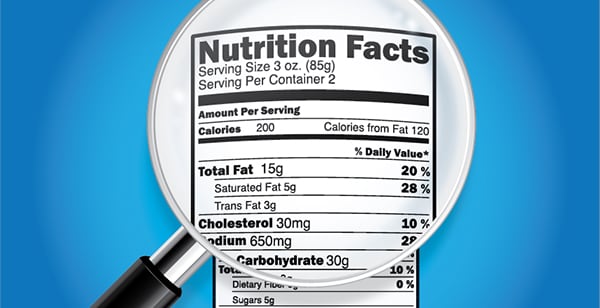

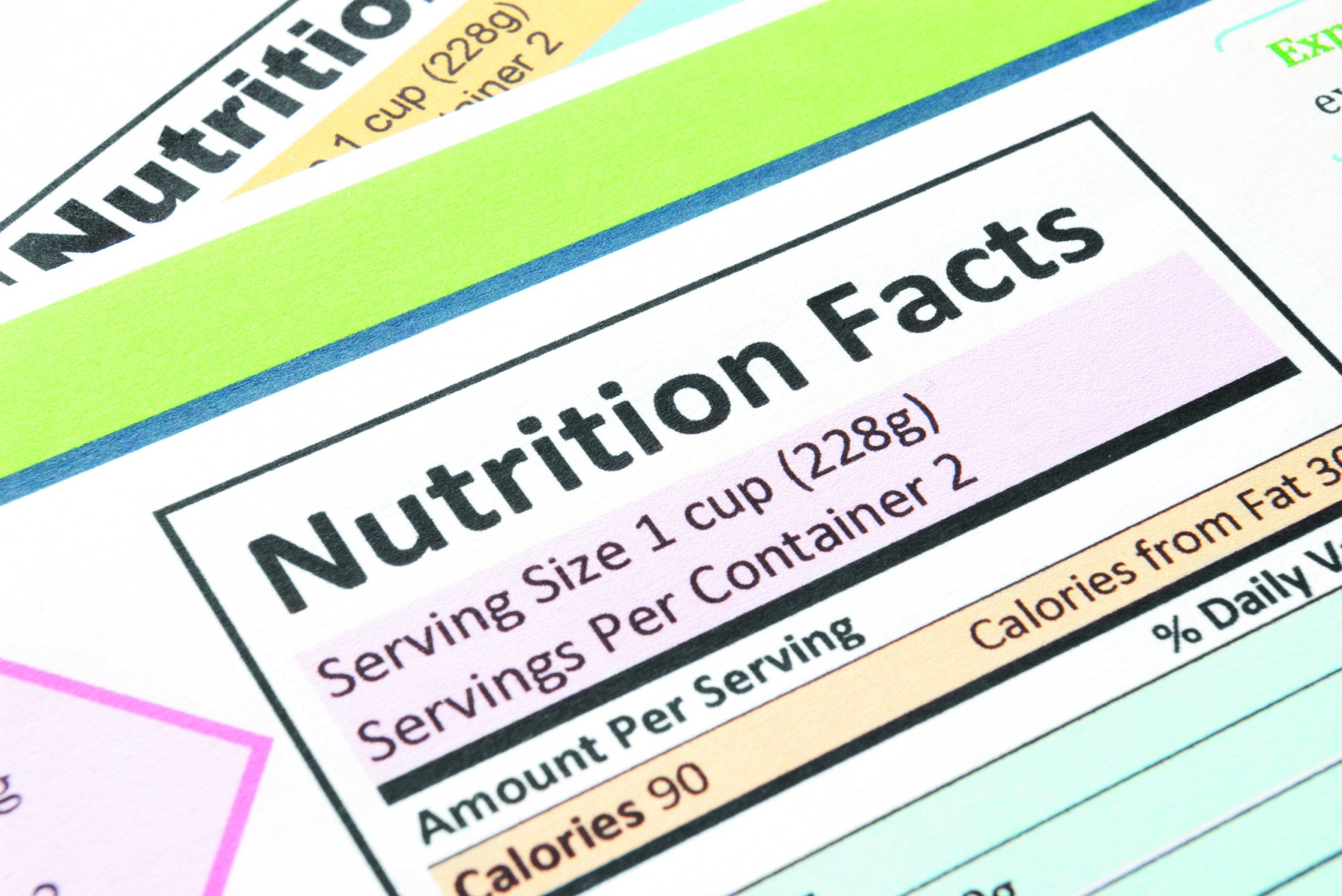

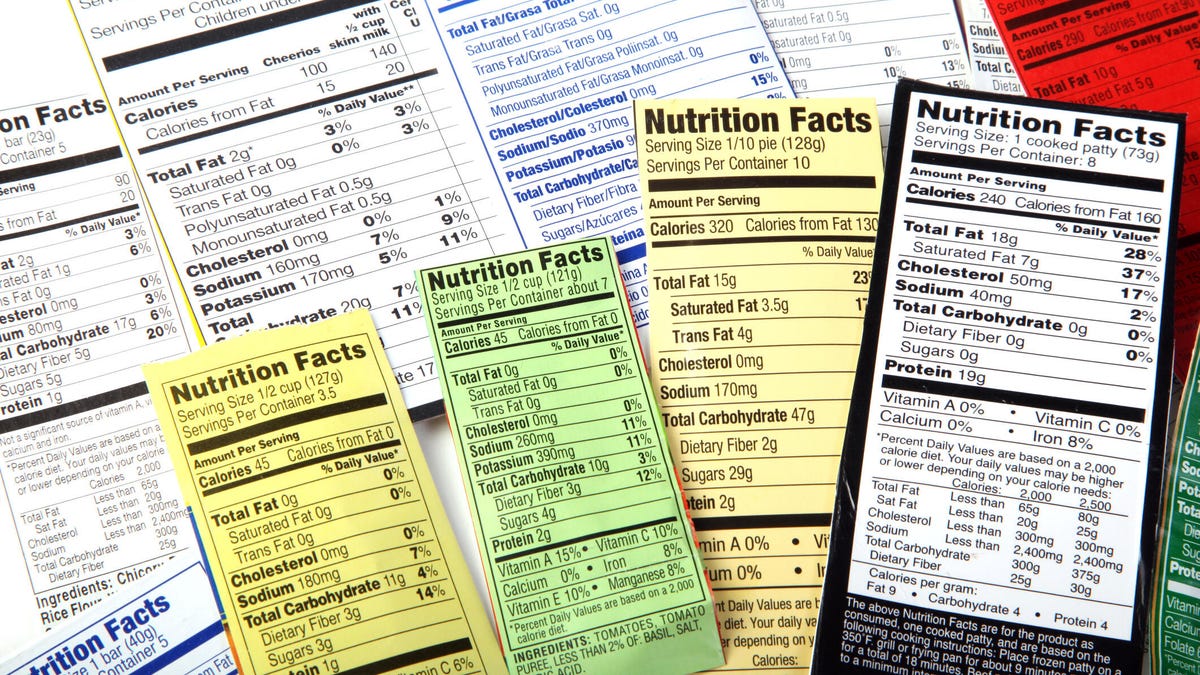



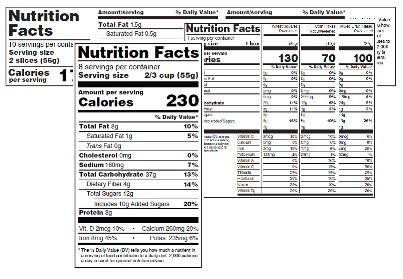
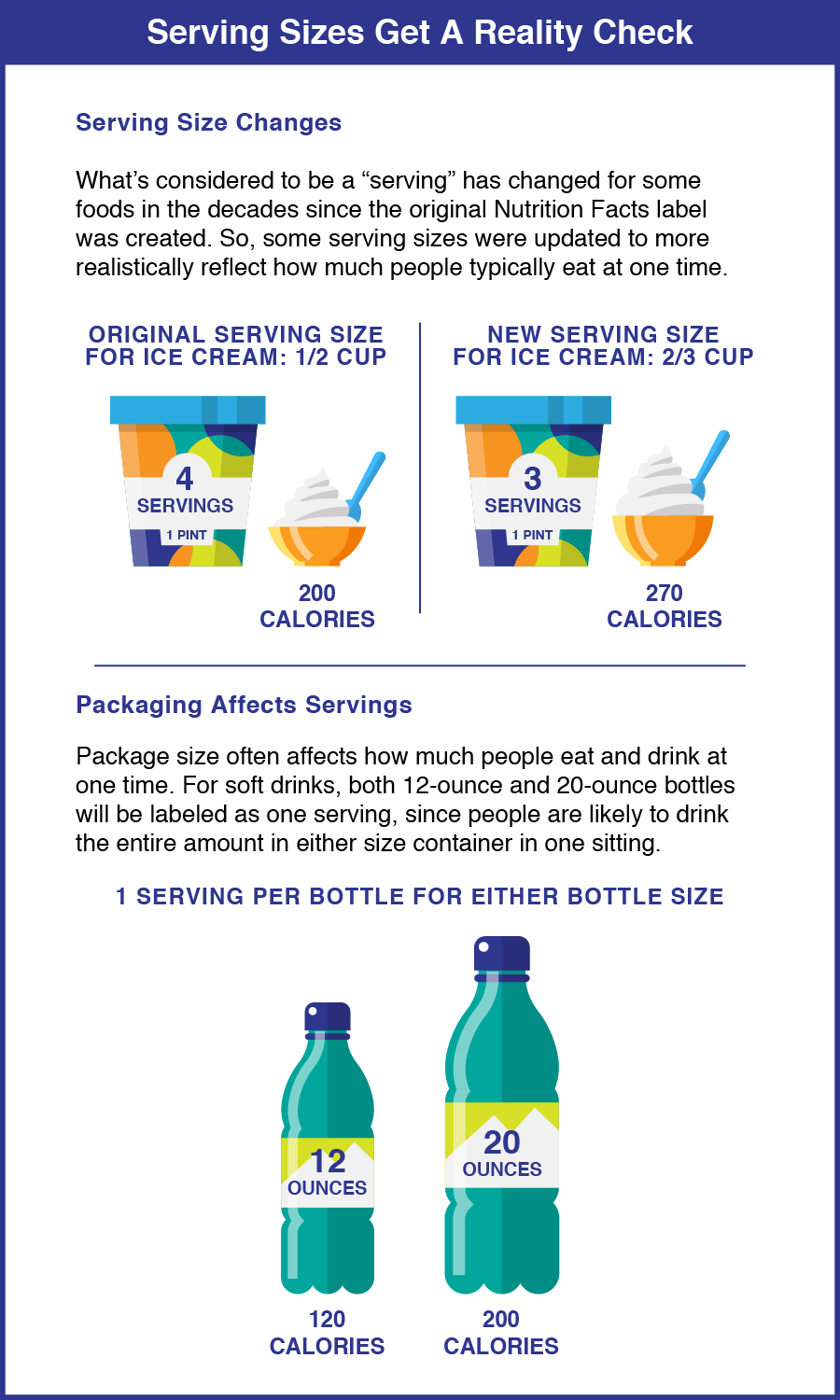

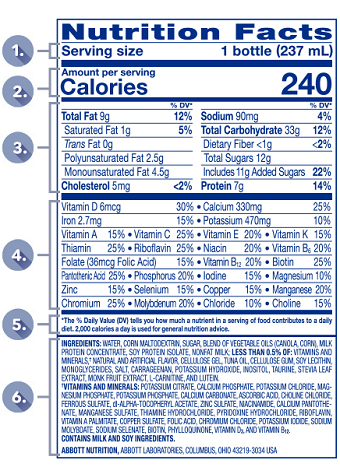
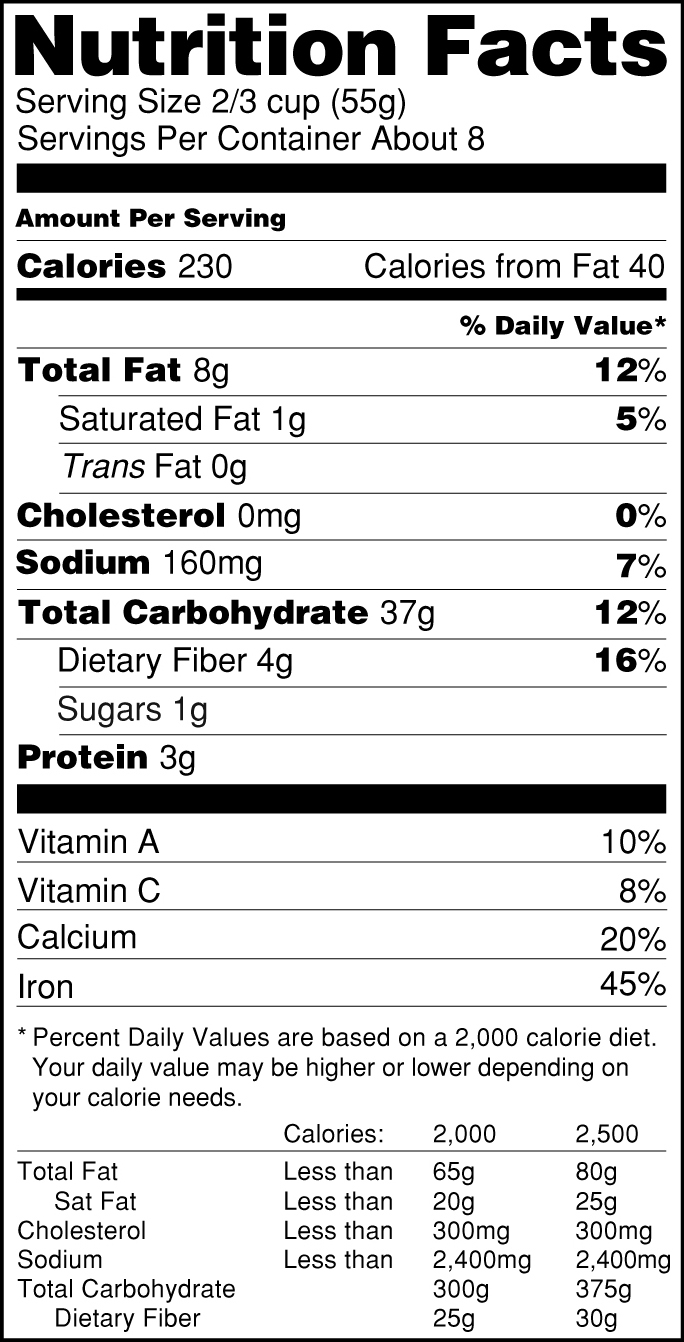
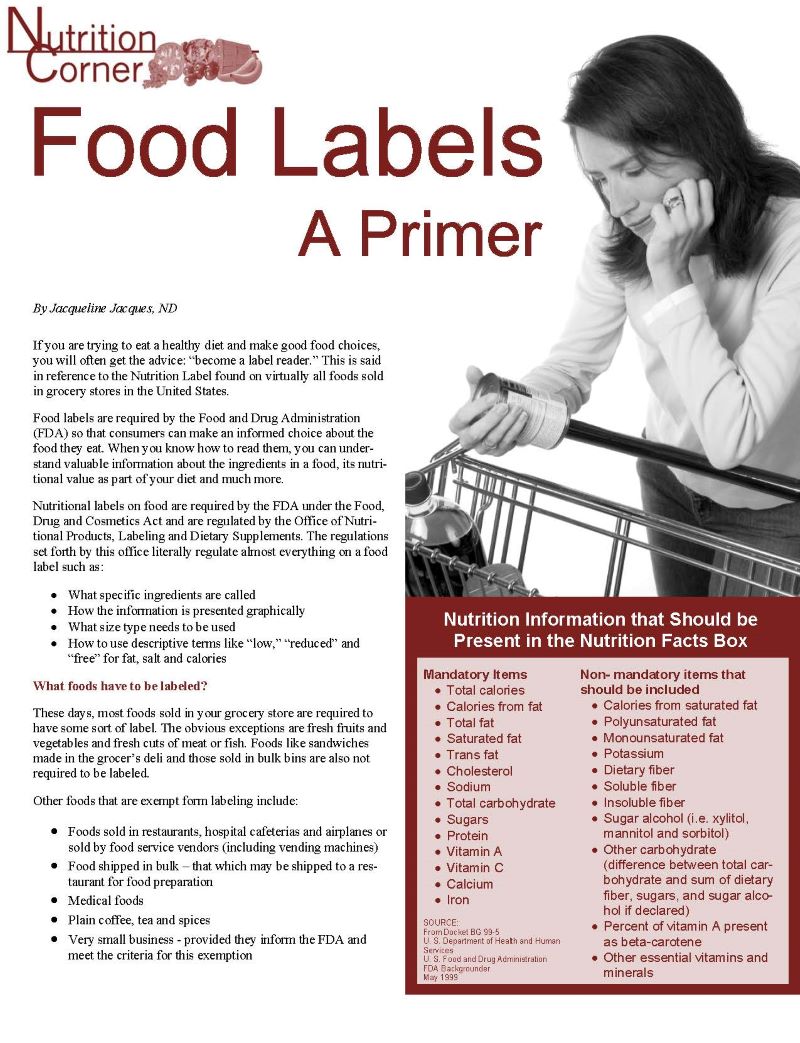
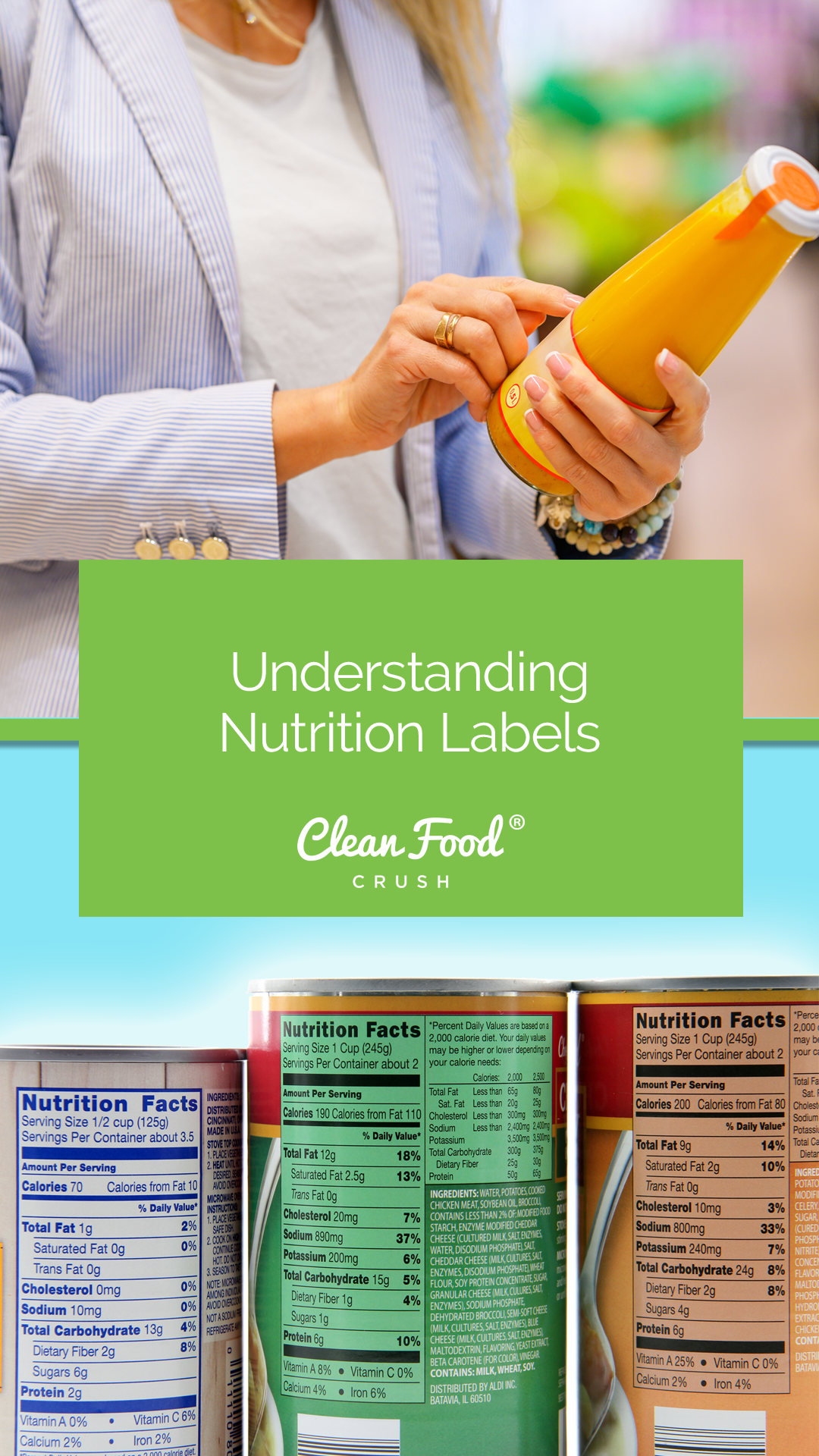

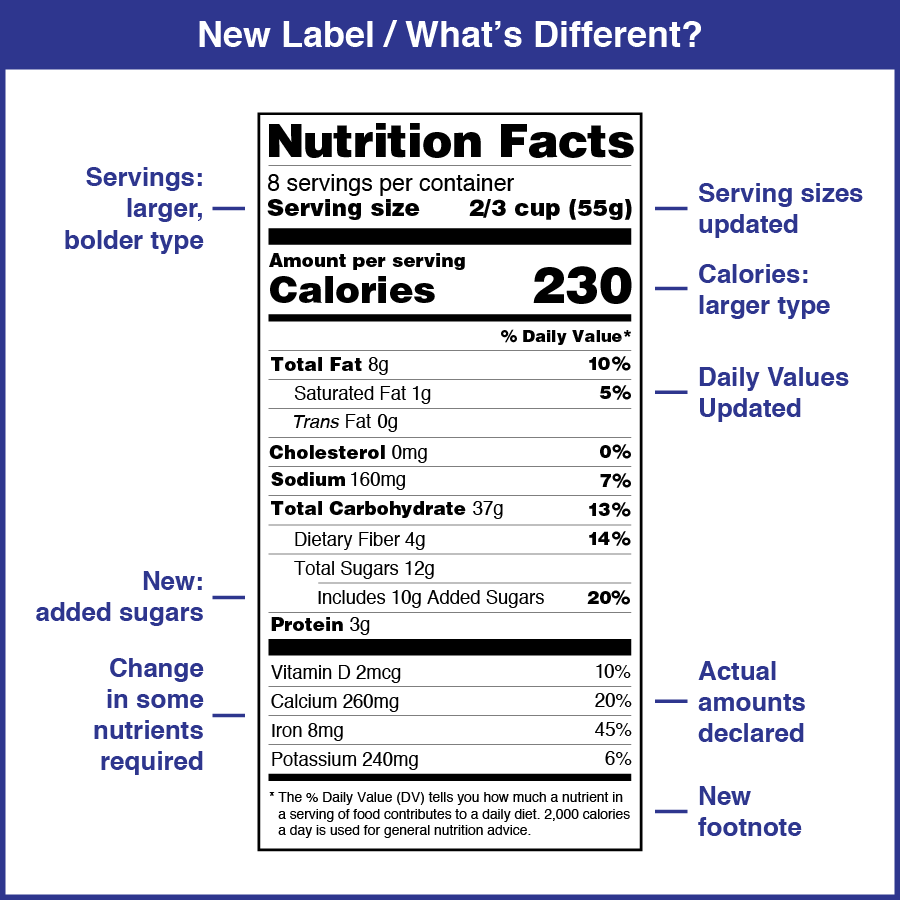




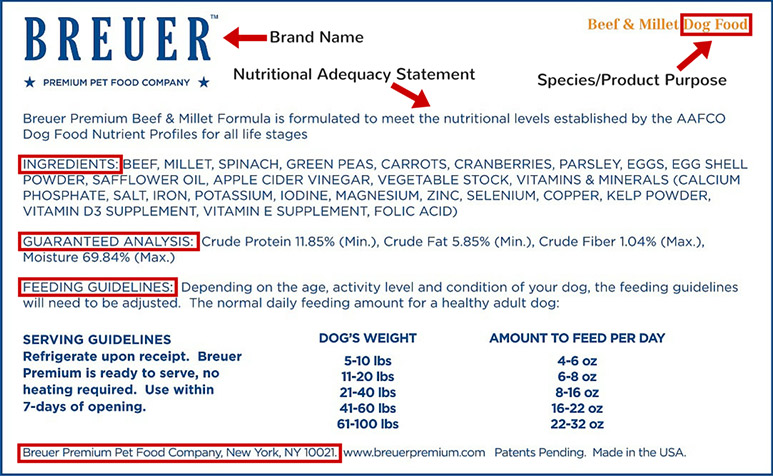

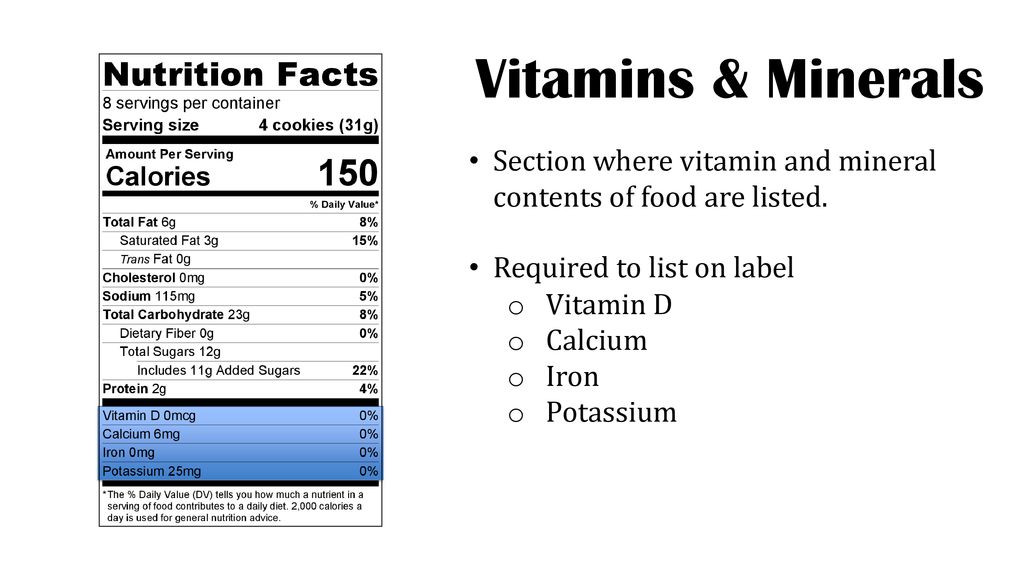
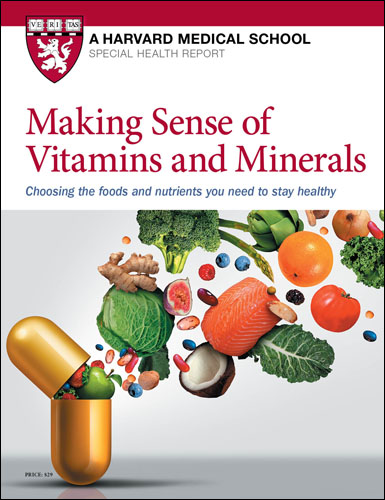
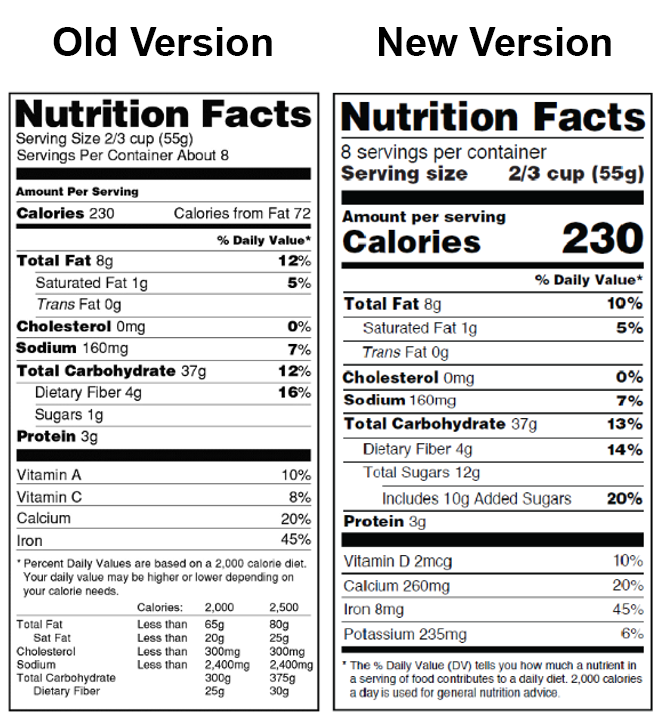
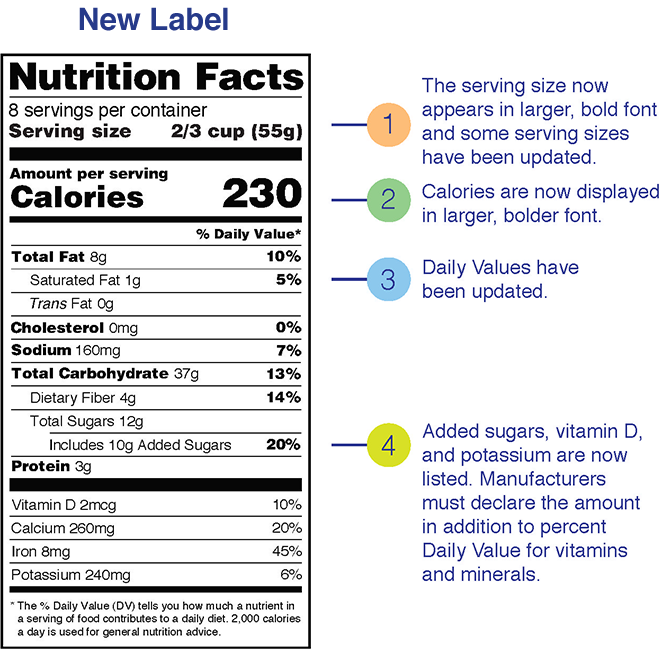
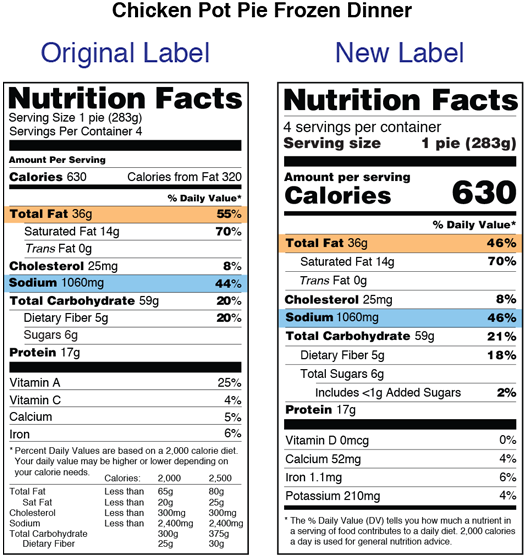


Post a Comment for "38 what vitamins and minerals are required on the new food labels"